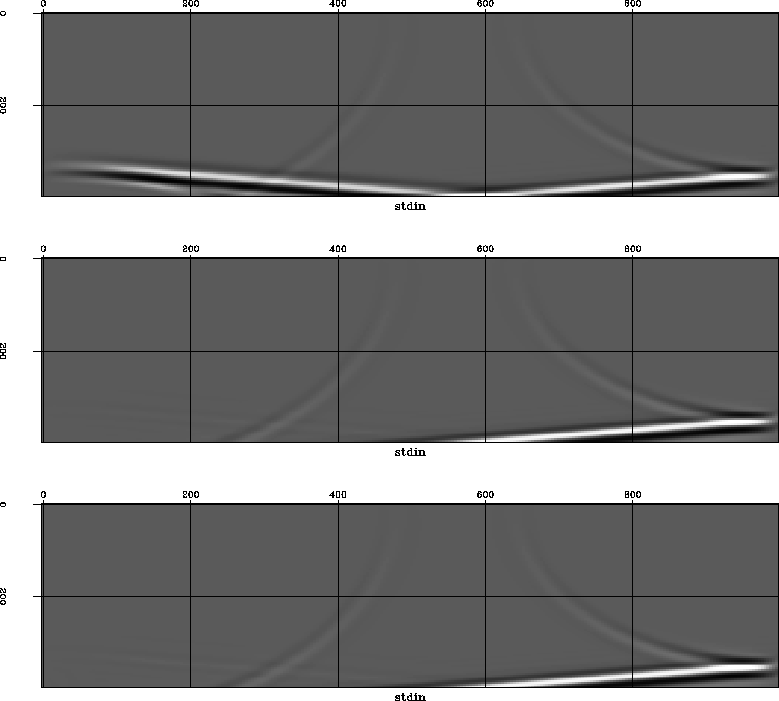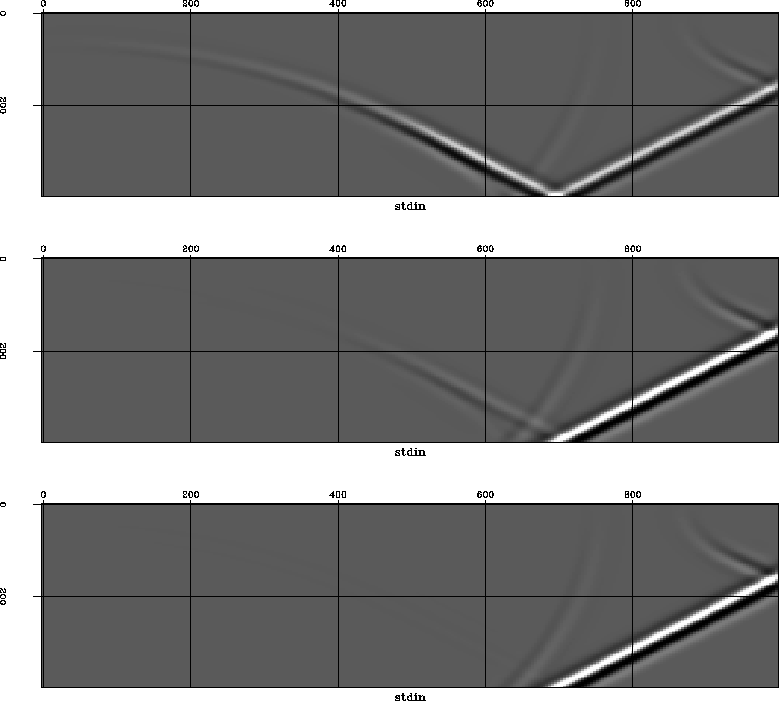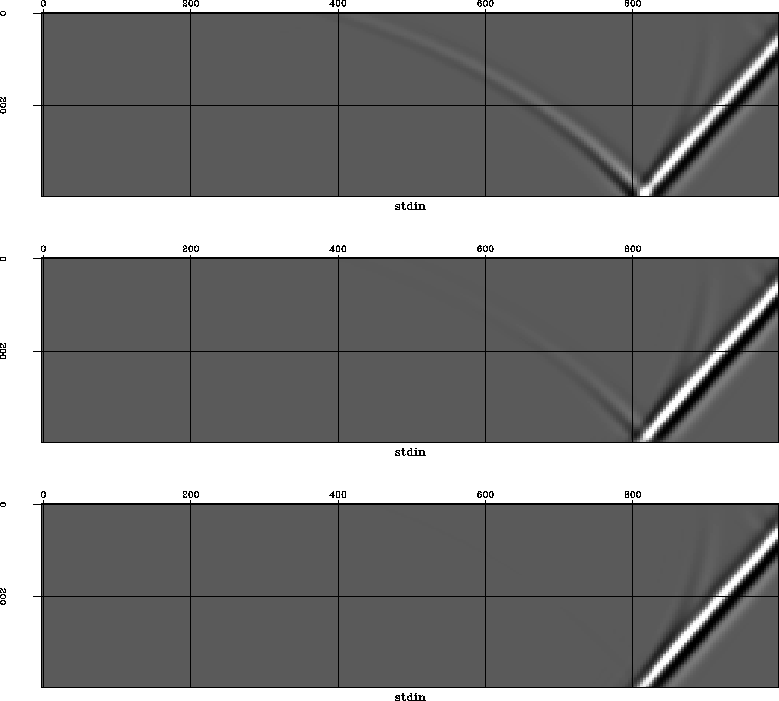




Next: Conclusion
Up: Guojian: Absorbing boundary condition
Previous: Absorbing boundary condition for
I test the absorbing boundary condition on plane waves
with different incident angles.
I compare the results of
a low order absorbing boundary condition (5o one-way
wave equation, equivalent to the method in Engquist and Majda (1977) )
and a high order absorbing boundary condition (45o one-way wave
equation). The results show little benefit in using a
high order absorbing boundary condition for small incident angle plane waves.
However, we get a much better absorbing result of the high order
absorbing boundary condition
than that of the low order absorbing boundary condition for large incident angle plane
waves. For small incident angle plane waves (Figure 2), both low order and high order
absorbing boundary condition equations do very well with the reflection.
Theoretically, the low order
absorbing boundary condition equation can only handle the reflection with angles less
than 5o. So for reflection with a large angle (middle panels in Figure 3
and Figure 4),
there is still a lot of reflected energy
left after absorbing.
High order absorbing boundary conditions (bottom panels in
Figure 3 and Figure 4), still
do well with the large angle reflection, and the results show
that most reflection energy
vanishes for both big and small incident angle plane waves.
absorb4
Figure 2 From top to bottom: modeling with no boundary
condition; modeling with low order absorbing boundary condition; modeling with high
order absorbing boundary condition




 absorb2
absorb2
Figure 3 From top to bottom: modeling with no boundary
condition; modeling with low order absorbing boundary condition; modeling with high
order absorbing boundary condition




 absorb1
absorb1
Figure 4 From top to bottom: modeling with no boundary
condition; modeling with low order absorbing boundary condition; modeling with high
order absorbing boundary condition










Next: Conclusion
Up: Guojian: Absorbing boundary condition
Previous: Absorbing boundary condition for
Stanford Exploration Project
6/8/2002



